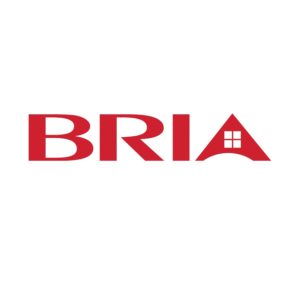We help leaders from local to multinational companies, non-profit organizations, and schools achieve extraordinary results.
Just like you, they’re looking to grow their people.






Quick Guide to Training Program For Employees in the Philippines
Learn more on about effective training programs for employees in the Philippines.
Corporate training in the Philippines is crucial for companies that want to see growth and success.
Our skills enhancement and developmental programs include a variety of corporate training opportunities such as leadership and management training, specialized training in areas such as privatization, financial management, valuation, and risk management.
These programs are specifically designed to support the continuous growth and career advancement of our employees.
By providing access to these resources and opportunities in the Philippines, we ensure that our workforce is equipped with the necessary skills and knowledge to excel in their roles and advance in their careers.
There are several types of training that can be provided for employees in the corporate sector in the Philippines.
Different training types will be used depending on the type of job.
Technical training addresses software or other programs that employees use while working for the organization.
Quality training familiarizes employees with the means to produce a good-quality product, and ISO sets the standard for most production and environmental situations.
Skills training focuses on the skills that the employee actually needs to know to perform their job, and a mentor can assist with this type of training.
Soft skills training addresses important skills that do not directly relate to a job, such as communication and negotiation, and professional training is typically given externally and can include obtaining certification or specific information needed to perform a job.
Team training empowers teams to improve decision making, problem solving, and team-development skills, and safety training ensures that the organization is meeting OSHA standards and includes disaster planning.
Additionally, some examples of specific training programs that businesses may consider include managerial and supervisory skills, customer care and client communication skills, creative thinking skills, workplace ethics awareness, and change management training.
Corporate training in the Philippines is essential for employees to acquire the skills and knowledge needed to excel in their roles and advance in their careers.
There are several important corporate training topics that every employee must take up to improve the operations of the company. These include:
- Compelling Communication – Employees must learn how to communicate effectively with each other and with clients to avoid misunderstandings and conflicts.
- Project Management – As a potential career path for employees, leadership skills must be developed early on to equip them for the challenges of managing a company’s operations.
- Managing Time – Time management is critical for productivity and success, and employees must learn how to effectively manage their time to avoid cramming, low-quality work output, and missing deadlines.
- Leadership Training – Future leaders of the company must be trained early on to master the skills needed to be effective leaders.
- Communications – Understanding the diversity of today’s workforce and learning how to communicate with people from different backgrounds is essential.
- Computer Skills – With technology playing a big role in today’s work environment, employees must be familiar with computer programs and systems.
- Customer Service – With competition in today’s global marketplace, employees must understand the needs of customers and meet them effectively.
- Diversity – Understanding and valuing diversity is essential in today’s workforce.
- Ethics – With increasing expectations about corporate social responsibility, employees must understand the importance of ethics in the workplace.
- Human Relations – The stresses of today’s workplace can lead to misunderstandings and conflicts. Employees must learn how to get along with others in the workplace.
- Quality Initiatives – Understanding quality concepts, guidelines, and standards is essential for success.
- Safety – Safety training is critical in certain work environments, and employees must understand how to avoid hazards and accidents.
- Sexual Harassment – Understanding the organization’s policies on sexual harassment and how to prevent it is important for creating a safe and respectful workplace.
The Training Program consists of four crucial components:
- Training Need Analysis: Identifying the specific training needs or requirements for the job and/or individual.
- Training Objectives: Setting clear and measurable objectives for the training.
- Training Delivery: Implementing various techniques such as action learning, on-the-job training, and more.
- Training Evaluation: Assessing the learning, reaction, behavior, and results of the training.
In addition to these key elements, the following strategies can help enhance the effectiveness of your training program:
- Performance Incentives: Offering bonuses, extra vacation days, or tangible rewards to employees who meet or exceed performance goals can increase motivation and productivity.
- Employee Development: Providing opportunities for employees to learn new skills, gain knowledge, and advance in their careers through mentoring, career counseling, and personal growth initiatives can enhance employee satisfaction and attract top talent.
- Process Improvement: Focusing on areas of the business that need improvement, such as streamlining sales and marketing efforts, can lead to increased efficiency and effectiveness of the training program.
- Technology Efficiency: Utilizing technology such as web conferencing, blogs, social networks, and mobile learning can improve communication, collaboration, and accessibility of training materials, allowing for more efficient and effective training.
- Use a training plan template: A training plan template is a useful tool for identifying and organizing training topics for individual employees, teams, and the entire organization. It can help leaders easily pinpoint the information and skills that need to be addressed by employees in different roles. Using a training plan template can also help discover new topics for corporate training programs.
- Perform a needs assessment: A training needs assessment is an effective way to evaluate different training programs for employees. It involves gathering input from employees who have the same job and perform similar tasks to identify the most important training needs. This process can help management make informed decisions about addressing knowledge gaps among individual employees and teams.
- Review employee questions: By reviewing common questions and problems among employees, leaders can create new training programs to address specific needs. This can save time and help employees focus on their work.
- Evaluate metrics and KPIs: Metrics and KPIs are a valuable way to measure the success of a training program and employee knowledge. They can help identify gaps in skills and knowledge, and provide insight into how to improve the training program.
- Access training data: Collecting and analyzing data on employee training can provide valuable insights into the effectiveness of the training program and areas where improvement is needed. This can help leaders make data-driven decisions about the training program and track progress over time.
Training effectiveness is the assessment of the quality of training provided and its ability to meet its goals and objectives.
One popular method of evaluating training is the Kirkpatrick Model, which consists of four levels: reaction, learning, behavior, and results.
The first level evaluates participants’ reactions to the training, the second level evaluates what they learned, the third level evaluates their ability to apply the training on-the-job, and the fourth level evaluates the training’s impact on meeting stakeholders’ expectations and achieving a return on investment.
To ensure a successful training program, it is important for the corporate training provider to set clear training goals that align with company goals, establish accountability for trainers and trainees, provide ongoing support, and involve participants through active engagement, opportunities for sharing experiences, and incorporating fun and creative activities.
An effective employee training plan should include all nine components:
- A skilled and effective training program manager
- Assessments of learning needs throughout the organization
- Alignment of training with company objectives
- Established goals and metrics to measure training effectiveness
- Support from leaders and advocates for training
- Modern and relevant learning content
- Creative ideas for training initiatives
- Ongoing marketing to encourage participation in training
- Reinforcement of what employees learn
To design a successful training program, it’s important to keep the following tips in mind:
- Make training a critical component of your organization. It is important to show commitment to a comprehensive and ongoing training program from the top executive level.
- Utilize various types of training methods and delivery methods to cater to different learning styles and paces of your employees.
- Review training materials ahead of time to ensure they are relevant and include hands-on practice.
- Monitor employee progress and hold them accountable with meaningful exams and KPIs.
- Make training an ongoing process by providing recurring refresher courses and cross-training opportunities.
Corporate training is a valuable investment for companies as it can provide a wide range of benefits for both employees and employers. Here are some key benefits of company training:
- Helps create the “ideal employee” by providing employees with opportunities to develop their skills and talents.
- Increases retention by engaging and motivating employees to stay with the company.
- Appeals to millennials by providing career development opportunities that they value.
- Improves job satisfaction and morale among employees, leading to increased motivation and productivity.
- Allows companies to respond to industry changes and stay up-to-date with the latest trends and technologies.
- Improves retention rates by providing employees with opportunities to achieve their full potential.
- Promotes internal advancement by helping existing employees build the skills and knowledge needed for higher-level positions.
- Helps companies outperform their competition by investing in a talented and capable workforce.
- Provides risk management by offering training on important topics such as sexual harassment and diversity.
- Enhances company image by providing training on important topics such as ethics.
Overall, corporate training can bring numerous benefits to a company and its employees.
By providing opportunities for growth and development, companies can improve employee motivation, retention, and performance, ultimately leading to a more successful and profitable business.
Training and development programs are essential for both employees and organizations.
They help employees perform at their best and equip them with the knowledge and skills they need to excel in their roles. In turn, organizations benefit from improved productivity, increased engagement, and higher profits.
In-house and outsourced training, conferences, and seminars can focus on a variety of topics, including leadership and management development, talent development, customer service and sales. These are important skills needed for most jobs in the Philippines.
Training can improve employee performance by providing them with the expertise they need to fulfill their role and make a positive impact on the business.
It also increases engagement by fostering two-way communication and enabling employees to be more emotionally invested in their work.
Investing in training also improves employee retention and growth. It shows employees that the organization values them and is committed to providing the resources they need to succeed.
This leads to increased job satisfaction and a greater likelihood of them remaining with the company for a longer period of time.
Consistency in training helps create a more cohesive and efficient organization. It ensures that all employees have a baseline knowledge of their individual and team goals and are aware of their role on the team.
Tracking employee skills through eLearning and learning management systems (LMS) enables organizations to identify areas of improvement and adjust course content accordingly. This leads to better overall training and employee development.
Training can also help address internal weaknesses within an organization by educating employees on important subjects and creating a knowledge-sharing environment. In turn, this can lead to happier customers and a more successful business.
Measuring the effectiveness of training programs is crucial in order to determine whether the objectives of the training have been met and to identify areas for improvement. One commonly used model for evaluating the effectiveness of training is the Kirkpatrick model, which includes four levels of evaluation: reaction, learning, behavior, and results.
The Kirkpatrick model measures how participants reacted to the training program, how much they improved in terms of knowledge and skills, whether their behavior changed as a result of the training, and what benefits the organization saw as a result of the training.
Another model, Kaufman’s model of learning evaluation, builds on Kirkpatrick’s model by separating the evaluation of learning materials and resources from the evaluation of the delivery of the learning experience. Kaufman also adds a fifth level of evaluation to look at the benefits to society as a whole or to a business’ clients.
Anderson’s Value of Learning model focuses on the alignment between the learning program’s goals and the strategic goals of the organization, and Brinkerhoff’s Success Case Method (SCM) studies the most and least successful cases within a learning program to identify what changes can be made to ensure success in future endeavors.



